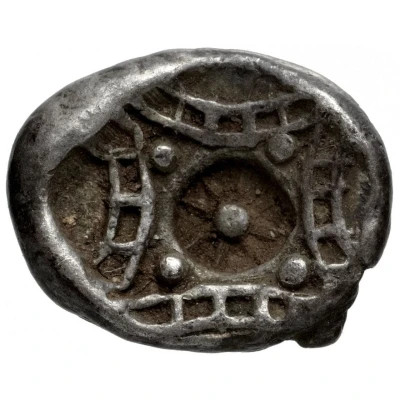


© Classical Numismatic Group, Inc.
Hekte 500 BC - 495 BC
| Silver | 1.91 g | 12.0 mm |
| Issuer | Halikarnassos (Caria) |
|---|---|
| Type | Standard circulation coin |
| Years | 500 BC - 495 BC |
| Value | ⅙ Silver Stater (½) |
| Currency | Drachm |
| Composition | Silver |
| Weight | 1.91 g |
| Diameter | 12.0 mm |
| Shape | Round (irregular) |
| Technique | Hammered, Incuse |
| Demonetized | Yes |
| Updated | 2024-10-09 |
| Numista | N#147366 |
|---|---|
| Rarity index | 94% |
Reverse
Incuse square with geometric pattern
Comment
Keto is a sea godess in ancient greek mythology representing the dangers of the open sea, more specifically of sea monsters, hvales and large sharks. She was the daughter of Pontos(Sea) and Gaia(Earth). She is the mother of the Gorgons, that are a usual depiction on greek archaic coinage.Interesting fact
The Hekte coin was used as a form of currency in the ancient Greek city of Halikarnassos (now Bodrum, Turkey) during the 5th century BC. It features an image of a lion's head on one side and an inscription on the other, which translates to "Halikarnassos" in ancient Greek. The coin was made of silver and weighed approximately 1.91 grams. Despite its small size, the Hekte coin played an important role in the economy of the city and was used for everyday transactions. Today, it is a valuable collector's item and a piece of history that provides insight into the daily life of ancient Greeks.
Price
| Date | Mintage | VG | F | VF | XF | AU | UNC |
|---|---|---|---|---|---|---|---|
| ND (500 BC - 495 BC) | - | - | - | - | - | - |
Values in the table are based on evaluations by sales realized on Internet platforms. They serve as an indication only for Hekte (500 BC - 495 BC) coin.



